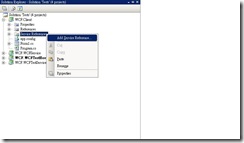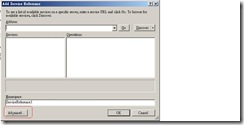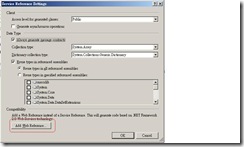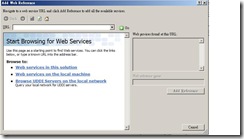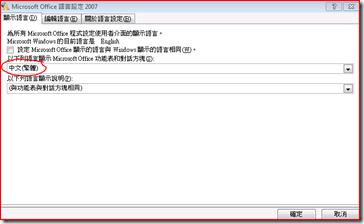While hosting BasicHttpBinding WCF service in windows service , I came accross the following error.
HTTP could not register URL (your wcf url) .Your process does not have access rights to this namespace
The error occurs due to the service account does not have access rights to the namespace.
This is a HTTP WCF Service delegated error, (in other words, this won’t occur if you are hosting Named-Pipe WCF serivces)
To grant the service account access right, in Windows 2008
- Open command prompt with administrator account
- Execute the following command
netsh http add urlacl url=YourWCFURL user=DOMAIN\username
You should get a message saying “URL reservation successfully added”
Reference:

